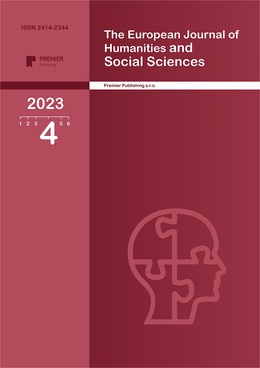Consideration of features in the content of various games in the organization of extracurricular activities in biology
Authors
Indira Aimbetova

Share
Annotation
This article discusses the importance of extracurricular work in the formation of competencies and worldview of students in grades 6-7. The features of the organization of extracurricular activities in general biology, botany, zoology, Anatomy and human physiology are described. The content of extracurricular activities in raising a child is closely related to the directions of Education. From this point of view, in the direction of moral education of students, attention is paid to the study of the life and activities of historical figures, the use of approaches that help to master the laws of political and economic development of society in the formation of a scientific view of the world is summarized. During the study, methods of testing and observing plants and animals in nature, planting trees and shrubs, creating birdhouses, visual aids, reports, abstracts, circles of young biologists, biological conferences, Olympiads, observation Diaries, exhibitions of students ' works, biological excursions were used. In order to determine the effectiveness of the work carried out, a survey of students of the experimental class was conducted. In the course of the survey, it was shown that extracurricular reading classes influenced the content of the material and the study of various biological literature, obtaining additional information about plants and animals, and increasing interest in the subject. the work on the systematic analysis of domestic and world achievements in the field of teaching biology in pedagogical practice has been carried out, as a result, the best innovations of world education and methods of teaching biology in secondary educational institutions will be revealed. As a result of research, this technique can be used by biology teachers as an auxiliary tool in organizing extracurricular activities.
Keywords
Authors
Indira Aimbetova

Share
References:
- Burgutin, A. B. (1991). Microclonal propagation of grapes. The Science. 216-220.
- Butenko, R.G. (2020). Biology of higher plant cells in vitro and biotechnologies based on them: textbook. Manual. - Moscow: FBK PRESS. 160.
- Li W., Wan, L., Tian B., Ding, J., Siemann, E. (2020). Introduced Populations of an Invasive Tree Have Higher Soluble Sugars but Lower Starch and Cellulose. Frontiers in Plant Science. 11.
- Imanbaeva, A.A., Belozerov, I.F. (2018). The use of computer technologies for plants introduction value diagnostics in the arid conditions of the mangystau desert. Journal of Pharmaceutical Sciences and Research. 10 (11): 2742-2746.
- Butenko, R. G. (1999). Induction of morphogenesis in plant tissue culture. Moscow, 42-54.
- Supuka, J., Alkurdi, M.I.S., Urin, P., & Halajová, D. (2017). Assessment of chosen woody plants introduction through growth and physiology characteristics. Thaiszia Journal of Botany. 27(1): 1-15.
- Besedin, E.N. (2015). The technology has improved clonal microcosmographie Apple at the stage of introduction to in vitro culture. Kubsau, 07(111):131-136.
- Rakhimbayev, I.R. (1992). Phytohormonal optimization of the fluid in the regeneration of black cherry in vitro. Stoica, 4:116 - 118.
- Buntsevich, L. L. (2010). The influence of new generation fertilizers on the adaptation of healthy strawberry cyclones ex vitro. Kub GAU. 3:215-217.
- Romankina, M.Yu., Kuznetsova, N.V., Fedulova, Yu.A. (2020). Scientific research as an important aspect of natural science education. Journal of Physics: Conference Series. 1691: 146-152.
- Tompson, N. (2011) Heart Protection Study Collaborative Group // J. Intern. Med.- 2011.- Vol. 268, №4.-Р. 348-358
- Morandi, B., Zibordi, M., Losciale, P., Manfrini, L., Bastías, R.M., Grappadelli, L.C. (2012) Apple and peach: A different role for fruit transpiration? Acta Horticulturae, 932: 213-218
- Оkazova, Z.P. (2018). The use of biological research tasks in the teaching of biology in higher educational institutions. ANI: Pedagogy and psychology. 3(24): 180-182.
- Kahle, J.B., Matyas, M.L.,(1985). An assessment of the impact of science experiences on the career choices of male and female biology students. Journal of research in science Teaching, 22:385-394.
- Walterm, L.F., Chris, Sh.A., Arminda, P., (2016). Implementing and operationalizing integrative approaches tosustainability in higher education: the role of project-oriented learning. Journal of Cleaner Production. 133(1): 126-135.
- Zheksenbaeva, I.B. (2005). Organization of students ' research work. Bulletin of the Kazakh NPU named after Abai, №2(22). 45-51.
- Sarsekeeva Zh.E., Ukenova A.K. (2011). Features of the organization of research activities of students in an innovative school. Herald of KarGu. 4:202-251.
- Kropaneva G.A., (2002). Educational and research activity of schoolchildren as a technology of developing education. Journal Research work of schoolchildren. №1, 118-126.


